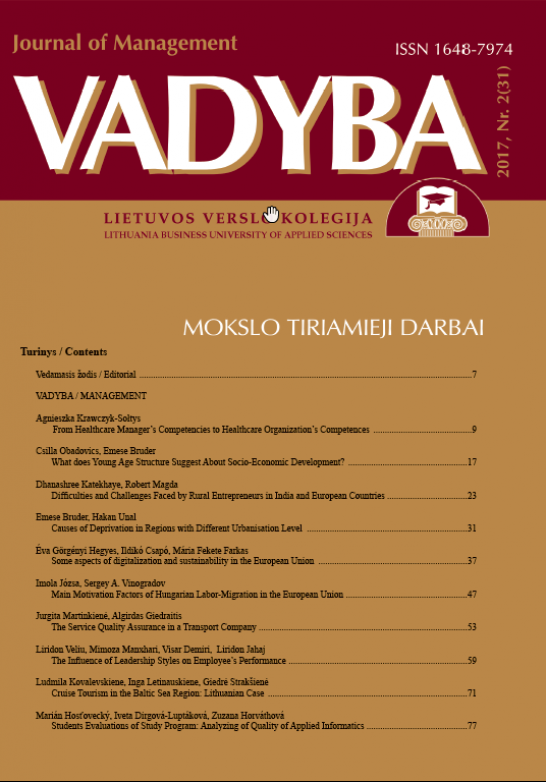CAUSES OF DEPRIVATION IN REGIONS WITH DIFFERENT URBANISATION LEVEL
CAUSES OF DEPRIVATION IN REGIONS WITH DIFFERENT URBANISATION LEVEL
Author(s): Emese Bruder, Hakan UnalSubject(s): Social differentiation, Rural and urban sociology
Published by: Lietuvos verslo kolegija
Keywords: deprivation; poverty; income; Europe;
Summary/Abstract: Poverty is becoming a major issue in the modern world; recent economic crisis clearly had an unfavourable effect on Europe’s poor population. The economic situation of a country - through wages - has a clear impact on the level of poverty. This study focuses on a special group of socially excluded people - the deprived - and tries to investigate the symptom of being poor in Europe by using an absolute poverty measure. The so-called deprivation index is made up of different factors of the household related to living conditions and livelihoods.Previous research showed, that urban and rural household have to face different conditions in terms of the causes of becoming poor. Urban poverty is a multidimensional phenomenon. However, households living in urban areas have more possibilities on the labour market, still large share of the urban households are at high risk of being poor. The urban poor live with many deprivations. Their challenges include limited access to employment opportunities and income, inadequate and insecure housing, violent and unhealthy environments, little or no social protection mechanisms, and limited access to adequate health and education opportunities. Central European countries have different path of European integration and economic development. Nevertheless, the determinants of being poor are various within regions of different urbanisation level. The goal of this paper is to explore these dissimilar causes across Europe and to determine factors that affect household level deprivation. In our analysis, we use binary logistic regression model to investigate the main drivers of being poor in different European countries with special focus on the differences of urban and rural areas. The analysis bases on the 2013 wave of EU-SILC cross-sectional micro data provided by Eurostat. In our research, we put the emphasis on identifying the most important attributes that characterise the group of the deprived population. We declare, that without a throughout analysis within this social group and without a deeper understanding and mapping of the problem, finding a solution is impossible.
Journal: VADYBA
- Issue Year: 31/2017
- Issue No: 2
- Page Range: 31-36
- Page Count: 6
- Language: English

